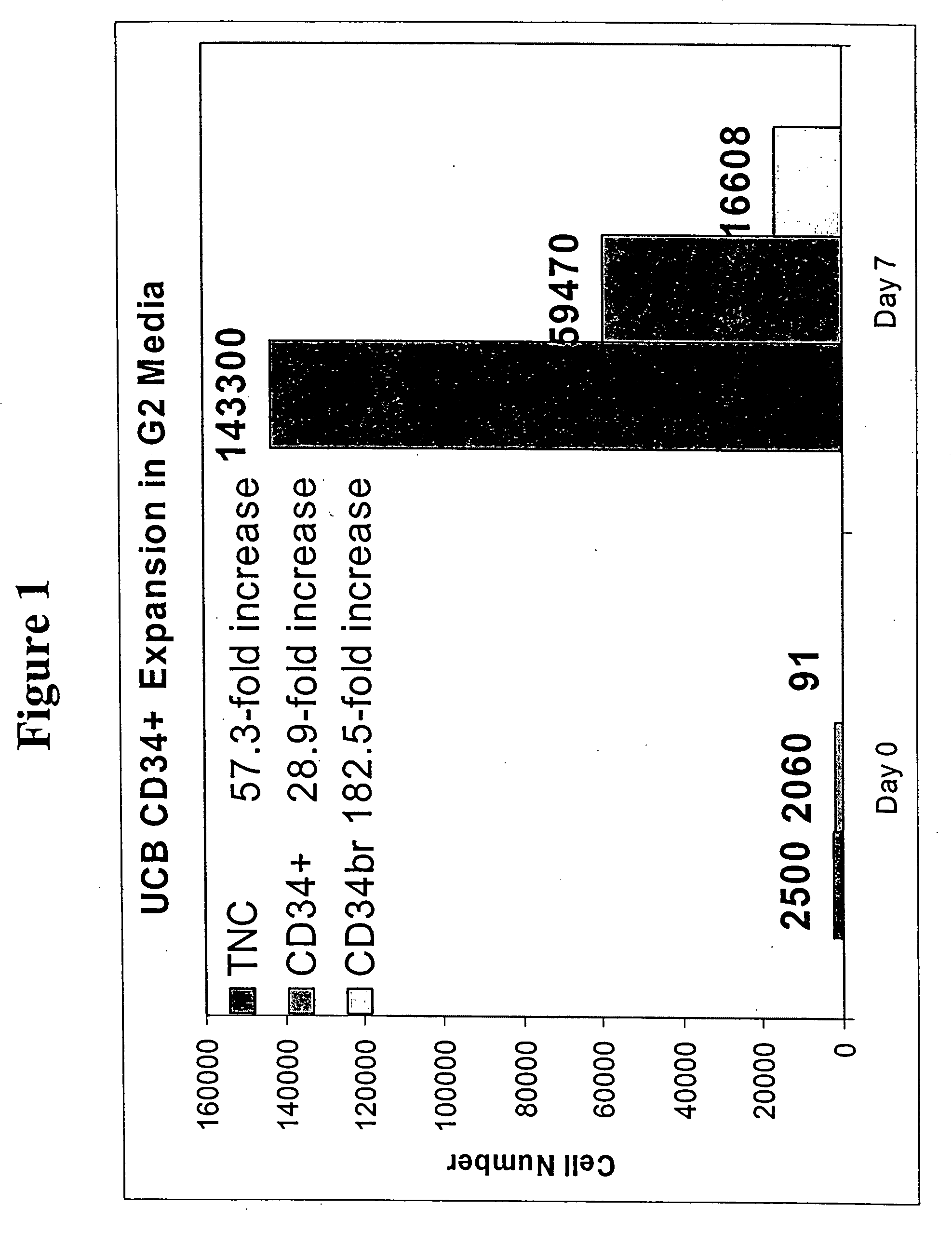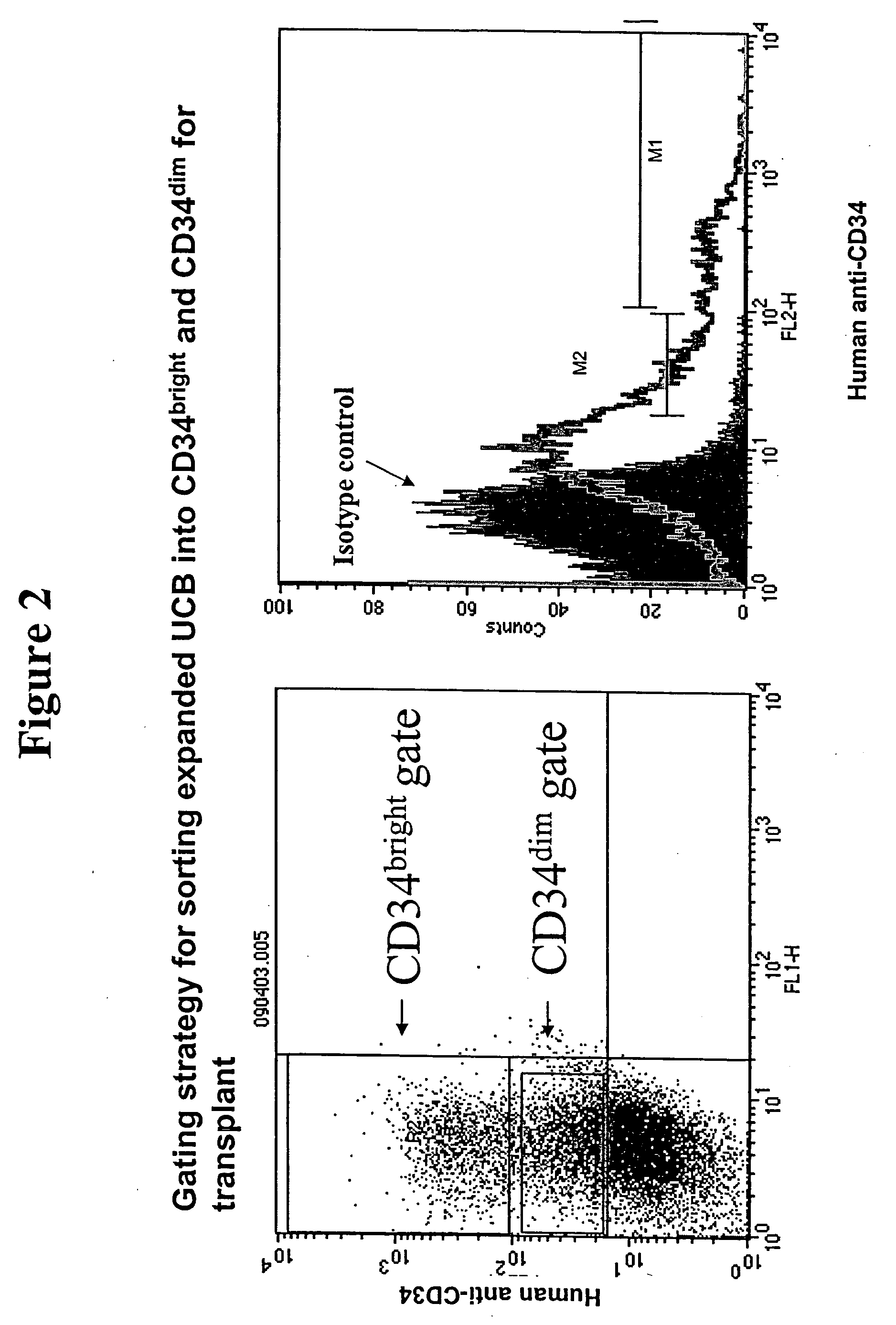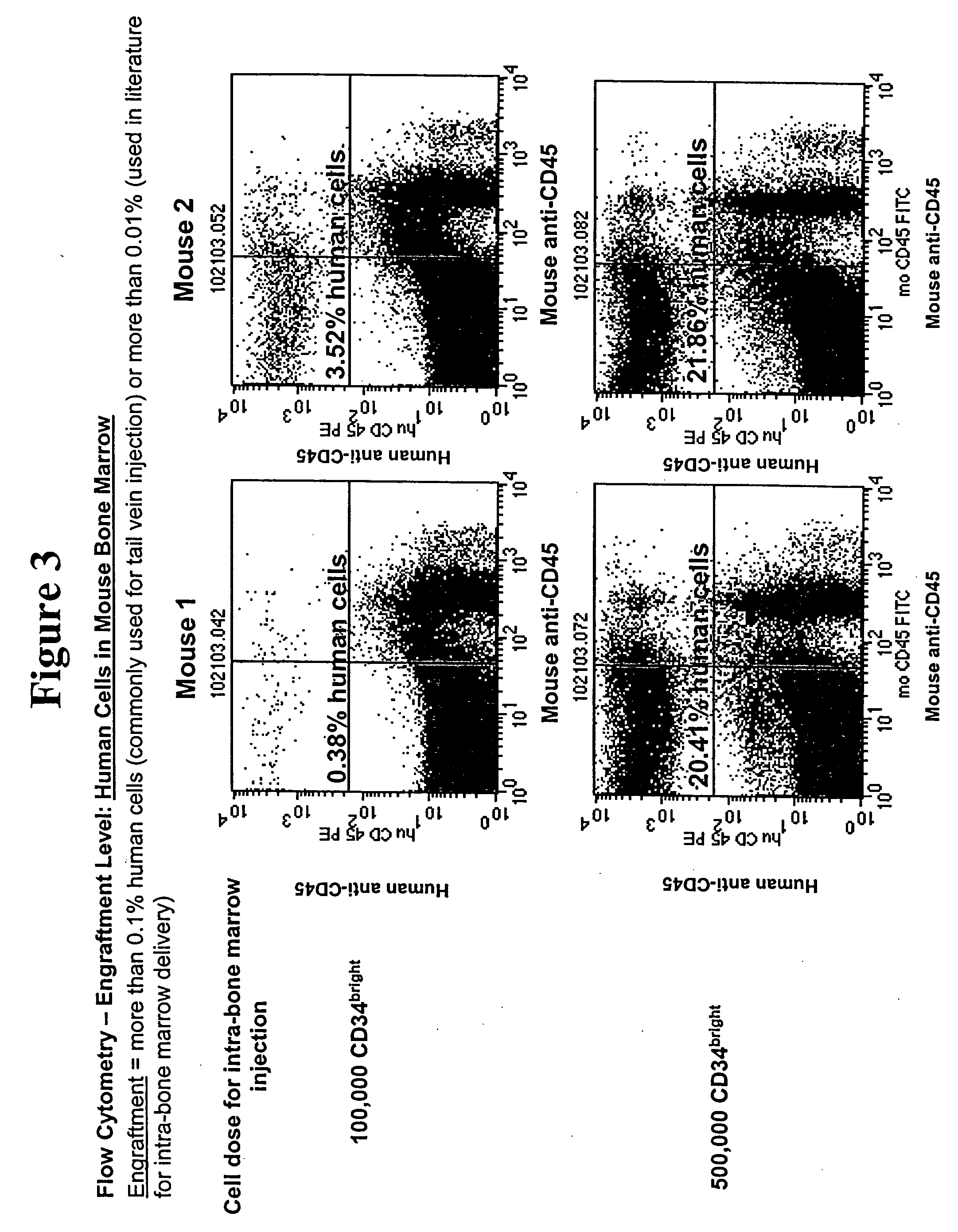Stem cell populations and methods of use
a stem cell and population technology, applied in the field of stem cell populations, can solve the problems of large mature cell expansion, increased risk of adverse immunogenicity reactions, and rare specific signals in recipients, and achieve the effect of promoting vascularization, promoting vascularization of tissue implants or ischemic heart tissu
- Summary
- Abstract
- Description
- Claims
- Application Information
AI Technical Summary
Benefits of technology
Problems solved by technology
Method used
Image
Examples
example 1
Identification of Culture Media
[0104] Media compositions that support the expansion of cord blood-derived CD34+ cells were identified. Screening plates were prepared using 96-well plates containing 30 factors in 60 different compositions. One thousand cord blood-derived CD34+ cells were incubated in each well for 7 days. Each experiment contained 3 repeats and each screen was repeated two more times so that 3 different cord blood preparations were tested in total. Following the 7 day incubation period, the cultured cells were characterized by 4-color flow cytometry (FACS, BD Biosciences, NC). The expanded cells were stained using a combination of 7AAD (to select dead cells), CD34 (to select stem / progenitor cells), CD33 (to select myeloid cells) and CD38 (to select maturing hematopoietic cells). Best media compositions were selected based on the average number of live cells and CD34+ cells obtained from the repeats from each screen.
[0105] Factor concentrations were selected based o...
example 2
Expanding Umbilical Cord Blood HSCs Ex Vivo
Media (G2, F2, and D6)
[0121] Cell Preparation
[0122] A 6% hetastarch solution was added to cord blood and incubated for 45-60 minutes. During this incubation stage, hetastarch is preferentially taken up by red blood cells. As a consequence, the red cells sink to the bottom of the conical tube and the blood separates into a light plasma / buffy coat fraction on top of the tube and a dark red fraction containing red cells at the bottom of the tube. White blood cells are contained in the plasma as well as in the buffy coat. A 5 ml pipette was slowly dipped into the clear layer, halfway above the buffy coat. The clear layer was then slowly stirred, causing the buffy coat and any cells contained in that layer to move off the red cell layer and into the plasma. The clear layer (plasma and buffy coat mixture) was then collected, centrifuged at 309 g for 5 min, and the supernatant removed and discarded. ACK lysis buffer was then added to the cell ...
example 3
Expansion Yield Under Different Oxygen Tension Conditions
[0168] CD34+ enriched cells were prepared and cultured as described in Example 2 using G2 medium. Cell culture was carried out in T-25 flasks (either lying down or inverted) or 48-well plates. Flow cytometry analyses and colony-forming units assays were carried out as describe in Example 2.
[0169] Cell Culture
[0170] 1) T-25 Flasks (Lying Down): [0171] a) 2,500 cells were added to 10 ml of G2 medium and incubated at 37° C. in 5% or 20% O2 for the length of the study. [0172] b) 8,300 cells were added to 10 ml of G2 medium and incubated at 37° C. in 5% O2 for the length of the study.
[0173] 2) T-25 Flasks (Inverted): [0174] a) 2,500 cells were added to 50 ml of G2 medium and incubated at 37° C. in 5% or 20% O2 for the length of the study. [0175] b) 2,700 cells were added to 10 ml of G2 medium and incubated at 37° C. in 5% or 20% O2 for the length of the study.
[0176] 3) 48-Well Plates: [0177] a) 2,500 cells were added to 1 ml o...
PUM
| Property | Measurement | Unit |
|---|---|---|
| detection threshold | aaaaa | aaaaa |
| concentration | aaaaa | aaaaa |
| temperature | aaaaa | aaaaa |
Abstract
Description
Claims
Application Information
 Login to View More
Login to View More - R&D
- Intellectual Property
- Life Sciences
- Materials
- Tech Scout
- Unparalleled Data Quality
- Higher Quality Content
- 60% Fewer Hallucinations
Browse by: Latest US Patents, China's latest patents, Technical Efficacy Thesaurus, Application Domain, Technology Topic, Popular Technical Reports.
© 2025 PatSnap. All rights reserved.Legal|Privacy policy|Modern Slavery Act Transparency Statement|Sitemap|About US| Contact US: help@patsnap.com



